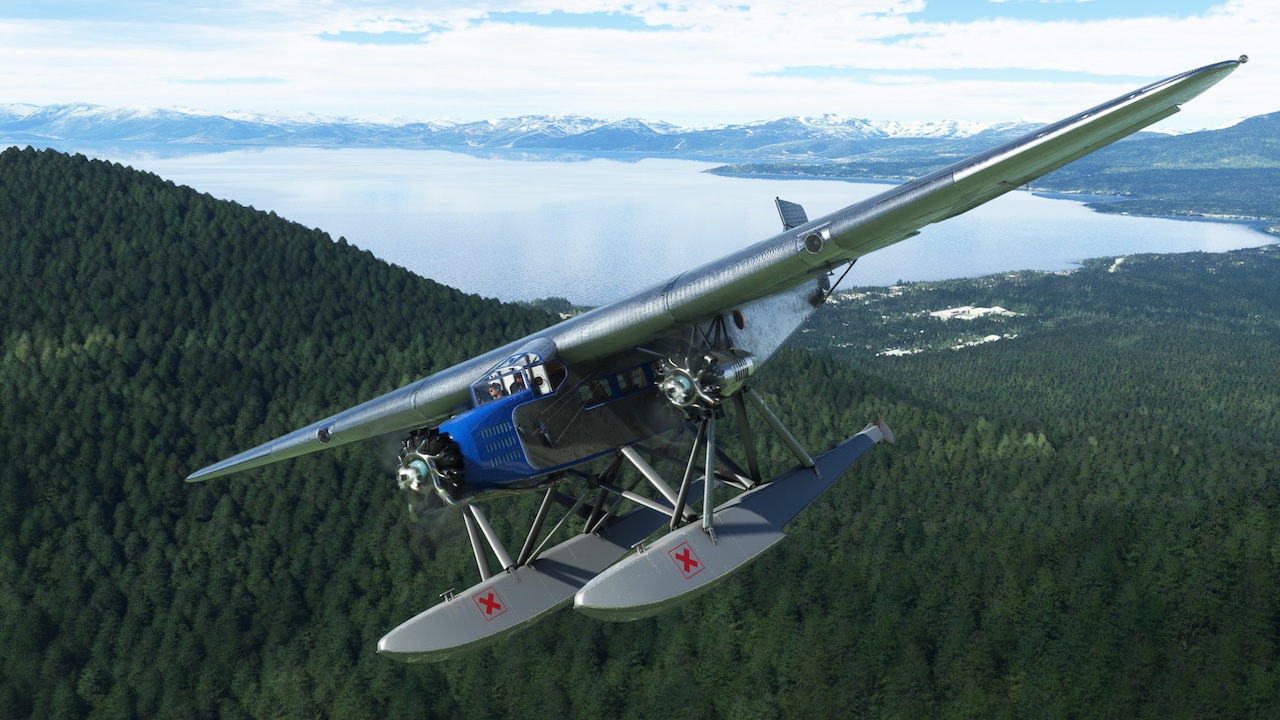– Adjusted the collision mesh inside to mitigate issues with camera clipping.
– Fixed an issue with the tooltip of the HSI’s CDI knob.
– Fixed an issue with the HSI’s CDI knob where it could not be adjusted using the gamepad.
– Vertical guidance on the HSI and VOR gauge are now aligned when tuned to the same station.
– Fixed a labeling issue with the Mixture on the center pedastal.
– Improved the art / animation of the transponder’s mode dial.
– Fixed Quickviews 1, 3, and 5 in the Floats and Skis variants.
The introduction of the Trimotor by the Ford Motor Company’s Stout Metal Airplane Division was one of the most important milestones in the early history of commercial passenger aviation. The sturdy, powerful, and comfortable aircraft made several long-range routes possible, including the line connecting Key West, Florida to Havana, Cuba. Roughly 100 airlines used the Ford Trimotor during its operational tenure, a testament to its reliability and efficiency. The 4-AT even saw limited service in military logistics support.
The aircraft took its maiden flight on June 11, 1926, and entered service later that year; 199 were manufactured during a production run that lasted from 1926 to 1933. It was crewed by one or two and carried up to 12 total passengers, including pilot(s). The Trimotor, actively and vigorously backed by Henry Ford, quickly established itself as one of the luminaries of the Golden Age of Flight.
The 4-AT features corrugated aluminum construction on its fuselage, wings, tail section, and control surfaces. It measures 49 feet, 10 inches in length, stands 11 feet, 9 inches high, and has a wingspan of 74 feet. It has a traditional empennage and a standard fixed undercarriage. The aircraft can be fitted with floats for water operation or skis for snow or glacier take-offs and landings.
The Trimotor is powered by three 300-horsepower, 9-cylinder Wright J-6-9 Whirlwind radial piston engines, each turning a 2-blade, fixed-pitch propeller. Two engines are located under the main wing, one on each side, suspended by braces. One engine is mounted on the nose of the airplane. The Trimotor has a range of 570 miles, climbs at 920 feet per minute, and has a service ceiling of 16,500 feet above sea level. It has a stall speed of 57 miles per hour, cruises at 115 mph, and has a maximum speed of 132 mph.

